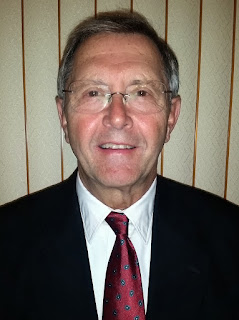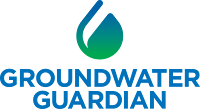by Kylen Hunt, CropMetrics
My granddaughter's favorite book, (God Made You Special Little
One) shows an image of a momma duck watching her baby in a bubble bath. The
momma duck laughs and says, “No one has your silly laugh when you splash in
bubble baths!”
A few weeks ago, our 2.5 year-old granddaughter received
bubbles from Nana and Papa. As soon as she saw the bubbles forming around her,
she splashed, laughed, and yelled as only a 2-year-old can, “Look Papa! I
splash in bubble baths!!” I too laughed, and we had a great time as she
splashed in her bubble bath.
As a grandfather, those memories are priceless. As a leader in
the irrigated Ag industry, I’m reminded to take the importance of clean water
resources seriously. If our family didn’t have unlimited access to clean water,
I wouldn’t have this memory. So I’ve asked myself, “Is there more I can be or
should be doing to ensure my granddaughters, granddaughters, will have
unlimited clean water?” I believe the answer is yes. There is more we can all
do. But it won’t be easy, and it’ll take great leadership.
In irrigated agriculture water quantity occupies most
conversations. The more we learn about water issues globally, I believe water
quality should be our primary focus. Why? Because if we, as a society of
citizens, focus on quality over quantity, many of the quantity issues take care
of themselves. How is that possible? Well, follow along with me as I lead you
through the why, how, and what process of achieving this goal.
 |
| Bottled water from OCWD's wastewater recycling system.. |
Why - Quality is important to everyone: Now sure, this is
obvious, right? But do we look at our water quality responsibilities first or
do we point to others faults being more of an issue than our own? In October, I
had the opportunity to attend the Groundwater Foundation's National Conference in Boise ID. At the conference, I listened to Adam Hutchinson with the Orange
County Water District in Fountain Valley CA explain what California is doing to
capture, clean, and reuse natural rain and waste-water. I was humbled and
reminded there are things that others, like myself, could be doing to ensure
everyone has clean water for drinking, cooking, and bathing. I saw images of
how they are slowing down the water in water channels (an amazing concept) to
allow more water to recharge the groundwater. I learned how it’s only taking
them 45 minutes to clean waste-water to drinking quality again. Unbelievable!
The biggest takeaway for me? There is more I can be doing to ensure clean water
sources in my own area of the world. I need to stop believing that others aren’t
doing enough and do more myself.
How - “Water Quality Assessment (WQA)” is a concept everyone can
engage in: It simply says that when a process requiring water is complete,
(final) the quality of the water at the end should be the priority
consideration in the process. Why? Because by default the ending water quality
will become the beginning water quality for another operation. Will the current
process improve, or hinder human, plant, or animal life? If it can have an
adverse effect, can we change the first method to improve the second? Here’s an
example from agriculture where I invest most of my time.
Farmers grow plants. Plants use water in the soil to pull
nutrients and chemicals through the roots into the plant. The plants transpire
(sweat) clean water back into the atmosphere through the leaves. The nutrients
and chemicals are left in the plant to create and maintain plant health and
reproductive potential. This is a natural process and is an example of highly
efficient water use resulting in a high WQA. It’s simply natural and super
effective.
However, any water (rain or mechanically applied) when over
applied moves water, nutrients, and chemicals past the root zone where it is
wasted forever. Not only is the water wasted, but the nutrients and chemicals
are also wasted. This is an extremely low WQA. Also, in this case, applying or
preparing plants to take in only the water they need, WQA becomes a very
profitable process!
Well, this leaves a question. What must we as citizens improve to
have higher WQA’s every time we use water? For starters, becoming more aware of
the water we use and how we use it. Second, it's a matter of interdependency.
Living and working together. Not seeing ourselves as more important than
someone else. But seeing ourselves as equal citizens in a world where EVERYONE
wants clean, fresh water.
I look forward to hearing from others who have ideas on assuring
that all future generations enjoy the occasional BUBBLE BATH!
__________
Kylen Hunt is Chief Sales Officer for CropMetrics, a Precision Irrigation Solutions Company focused on Precision Irrigation Adoption. His background in Agriculture began as a teenager working with his family in Central Nebraska. He was taught to love the land and respect its natural resources. In seeing the profitable result through intense and precise irrigation management, Kylen became passionate about building sustainable precision water programs through the CropMetrics network. It's easy to be passionate about a conservation when it's profitable! Today, Kylen lives in Omaha Nebraska with his wife Rebecca, his biggest fan for twenty-four years. Through the study of truth based leadership, Kylen took this learned knowledge into the industry for the purpose of designing and growing profitable businesses built on purposed leadership. Today, in correlation with his role at CropMetrics, Kylen engages in events that equip leaders to recognize and utilize their unique, untapped potential. Reach him at kylen@cropmetrics.com. www.cropmetrics.com
































